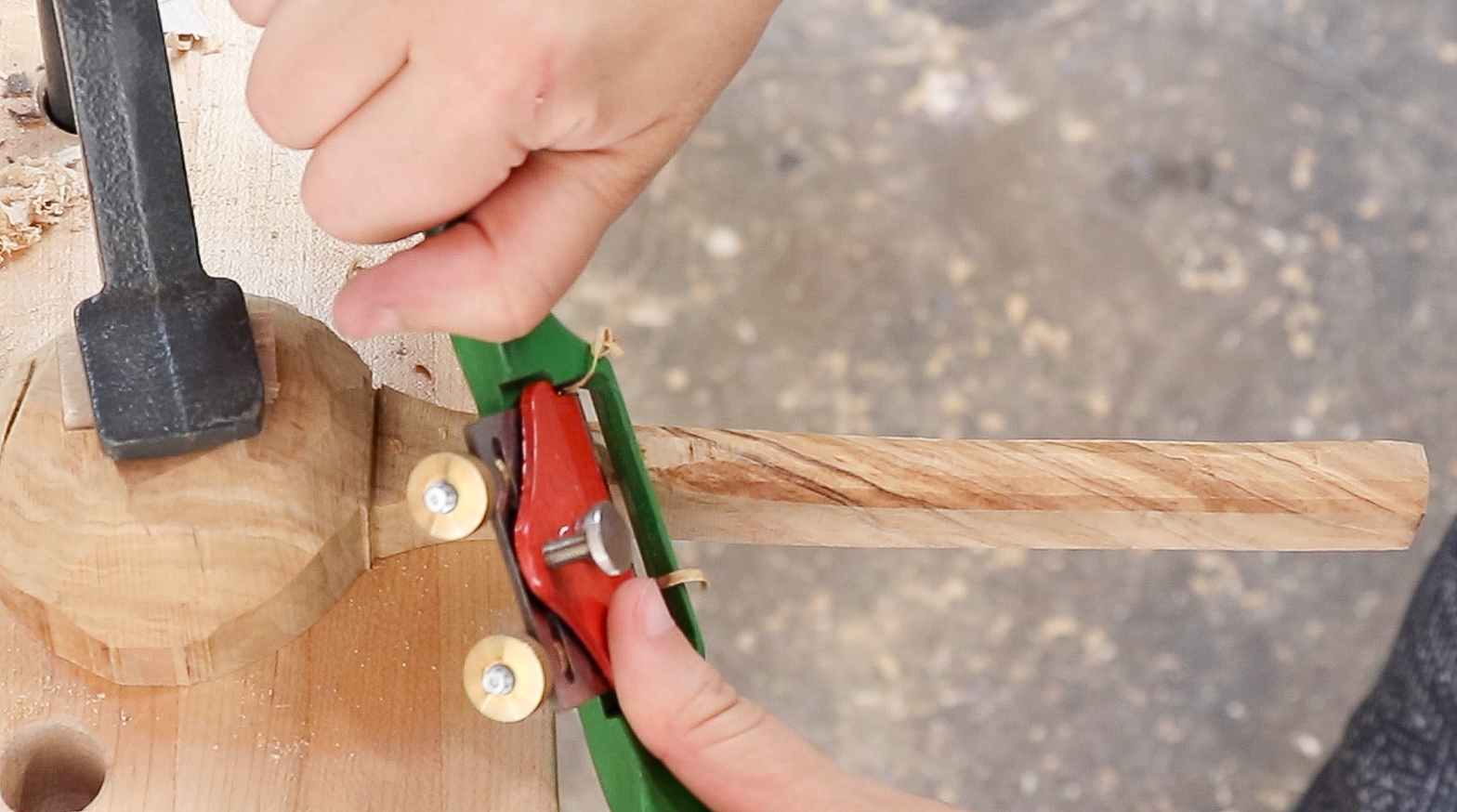Carving Spoons - Power Tools VS. Hand Tools
*This post is sponsored by The Home Depot
I love to carve spoons in my spare time because I find its a great way to keep my hands busy while still hanging out with my family.
My favorite part of spoon making is sitting down with a carving knife and refining the shape. So I wanted to experiment and see what is the most efficient way for me to create a spoon blank so I can get to carving!
Check out the full build video below!
Links below are affiliate links, clicking on them helps me keep this site going at no extra cost to you ;)
The first step in spoon making is to pick out the wood! I always try to pick scraps that have straight grain in them so the handle will be continuous grain and it will be less prone to breaking. (I didn’t follow that rule on the olive wood spoons…ha)
I don’t like to use templates, I just let the wood determine what shape the spoon will be.
My spoons are typically 1/3 bowl and 2/3 handle.
I always like to carve out the bowl of the spoon first because it is easy to clamp down at this point.
My first experiment was with the router.
I used a round nose router bit and set it so that it would make a super shallow cut. Then I plunged into the center moving around in circles until I got to the lines that I drew out.
I repeated this step about 5 or 6 times lowering the bit ever so slightly each time to deepen the bowl. With each pass I also made my circles smaller (going further away from my pencil line) so that I would be creating a bowl like shape.
This worked, but didn’t leave such a clean cut, you could still see the stepped lines from the router bit.
So I used my Dremel Stylo+ Craft Tool with a sanding drum attachment to clean up all the lines.
This little Dremel is super comfortable to hold, it feels like holding a pencil, so it’s really easy to use for fine detail applications. I felt like I had so much control over it and my hand wasn’t fatigued at all.
I don’t use Dremels every day, but they really came in handy for this project! You’ll see them again! Ha!
For the next experiment I tried to carve out the bowl using a flap disc on my angle grinder.
This was really dusty and it left a pretty wide bowl. So this piece took on a new life as a spoon rest instead of a spoon…
Perhaps if I had those small cutting discs that you can attach to the angle grinder this method would work well.
The bowl left by the flap disc wasn’t perfect, Dremel to the rescue again! This time I used a sanding sheet attachment instead of the drum. It worked perfectly.
The last method I tried for carving out the bowl is the old tried and true hand tool method.
I just recently picked up this gouge and it’s becoming one of my favorite tools. It’s so fun to use!
I could have spent all day carving out this bowl if my kids didn’t need to eat…. ha!
I also just recently got this hook knife and tried that for the maple spoon. Also a super fun tool!
I roughed this one out with the gouge and finished the shape with the hook knife. My kids loved helping me out with this part as well, spoon carving is a great woodworking project for kids!
Now that all the bowls are carved out it’s time to cut the spoons out to rough shape.
I tried the bandsaw first….
Jigsaw second…
And lastly handtools….
I made some kerf cuts with a handsaw along the side of the blank, stopping where I wanted the handle to be.
Then I used a chisel to clear out the waste.
Making the stop cuts first prevents you from chiseling too far into the wood and ruining the shape of your handle.
All the spoons are now cut to rough shape, now it’s time to shape them so they look like a spoon!
The first method I tried was the bandsaw.
This is an advanced technique, but if you are careful enough, it’s a great way to remove a ton of material.
Next I tried the bench top sander. While this worked, I didn’t enjoy the process…
I also attempted to use the angle grinder with a flap disk again.
I did this for the spatula I made and it was actually a great way to remove a ton of material before final shaping.
These are starting to look like spoons! The shape just needs to be refined a bit more.
I like to refine the shape a bit with the spoke shave. It also removes a lot of material and its really satisfying to use.
I just kept going back and forth from the handle to the bowl to get it closer to the shape I was looking for.
The spoon rest I was making (the one that the bowl was too wide because of the angle grinder) had an odd shape and the spokeshave would not fit.
So I just used my chisels to remove a ton of material to get to closer to final shape.
Finally, I’m up to the carving, my favorite part.
I sit down, relax and just carve with my carving knife until i get the shape I want.
I’m still pretty new to spoon carving, so learning all the nuances with the grain direction is a super fun process.
I can sit down all day trying to make these spoons perfect, but alas, kids and their need to eat again…
After carving them to their final shape I started to finish them with a card scraper. I was loving how that felt on the handles, so I decided to make a gooseneck card scraper to clean out the inside of the bowls.
I had an extra card scraper lying around and traced a shape that I thought would work. (I have seen people make these from old saws too.)
Dremel for the win again!
I used a cutting disc to follow the lines I drew out and cut it out to rough shape
Then I cleaned up those rough cuts on the bench top sander. This was a super quick process. I have seen others use a file as well. That works, but takes a long time.
And to clean up the inside curve I used the Dremel again with a sanding drum.
Literally took me 10-15 minutes to make and it left such a great finish on the insides of the bowls.
Time for finish!
Well, before finishing I soaked them in water to raise any grain. When they dried, I knocked down any fuzz with some super high grit sandpaper. (This will eliminate any future fuzzing when washing them in the future)
Now finish time… I used some Walrus Oil Cutting Board oil and just set them off to soak in that for a bit.
I wiped off all the excess oil and then finished them off with Walrus Oil Wood Wax for some extra protection.
And they’re done!
This was such a fun experiment, I love how there are so many different ways to get the same results.
Through this experiment I discovered my favorite way to make spoons.
Gouge and hook knife to carve out the bowl.
Bandsaw to cut to rough shape and to remove a lot of excess material.
Spokeshave to bring everything closer to final shape.
And of course, finally the carving knife to refine it all.
I hope you guys enjoyed coming along with me on this little experiment.
My favorite parts on these spoons is the back where the bowl meets the handle. That part is just so much fun to carve and try to get perfect (which these aren’t, but that’s what makes them special and unique.)
The spoon rest ended up turning out pretty cool!
I love seeing all the facets from the carving knife on that handle, it sort of reminds me of a jewel.
My favorite thing about spoon carving is not having a plan and seeing where the wood and tools will take me.
I hope this inspires you guys to get out there and figure out which way works best for you!
Happy carving!






























